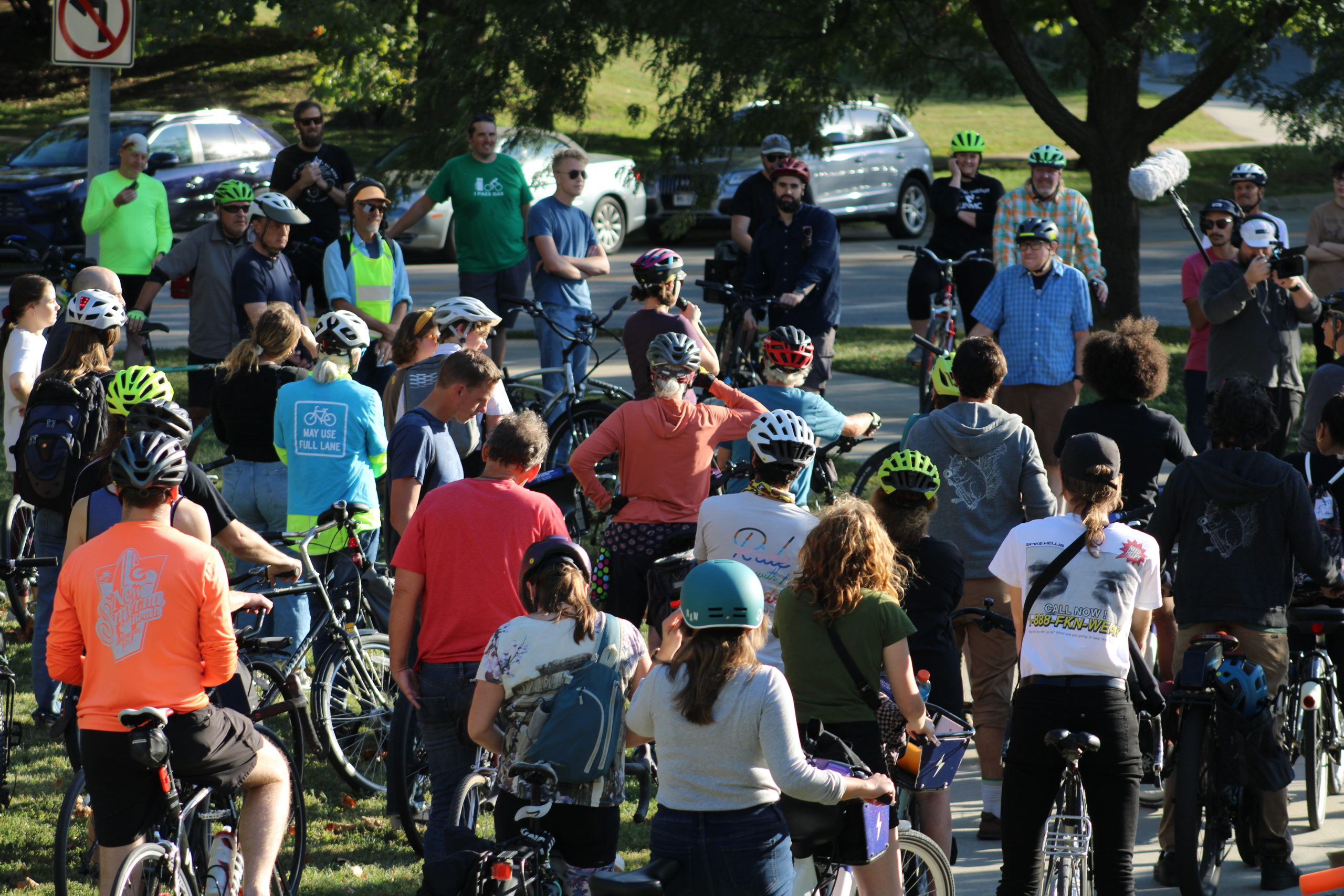We welcomed Greg Youell, Executive Director of the Omaha – Council Bluffs Metropolitan Area Planning Agency (MAPA), to our September 16, 2016 Coffee Chat. According to its website:
MAPA is a voluntary association of local governments. It was created in 1967 under the terms of an interlocal agreement to provide a forum for coordinating local planning and development activities. As an organization of local governments, we exist to help member governments address problems that are regional in scope and may cross jurisdictional boundaries.
 This includes transportation planning. As Greg noted, any project that gets federal funds has to go through MAPA’s planning process. Just as the City of Omaha has its Capital Improvement Program (CIP), which lists projects that are planned to be implemented in Omaha in the next six years, MAPA also has its Transportation Improvement Program (TIP), which does the same for regional projects.
This includes transportation planning. As Greg noted, any project that gets federal funds has to go through MAPA’s planning process. Just as the City of Omaha has its Capital Improvement Program (CIP), which lists projects that are planned to be implemented in Omaha in the next six years, MAPA also has its Transportation Improvement Program (TIP), which does the same for regional projects.
There are several important plans and studies that MAPA facilitates and which are important for us to pay attention to:
- Heartland 2050—a long-term vision of the future for the two-state, eight-county region, based on the core values of area residents. MAPA is focusing now on implementing action steps from this visioning over the next five years. One element of this is the “Close the Gap” Plan, which will build on existing plans to extending transit such as the BRT to Council Bluffs (to Iowa Western) and West to MCC, as well as North and South.
- The Long Range Transportation Plan (LRTP)—a 25-year plan that provides a list of projects to meet future transportation needs in the Omaha-Council Bluffs metro. MAPA is currently in the process of updating this plan.
- Metro Area Travel Improvement Study (MTIS)—a study to: develop a comprehensive, multi-modal plan for the interstate and major roadways in the region; prioritize projects for short-term, mid-term, and long-term; and consider shortfalls in existing sources of local, state, and federal funding.
MAPA also recently partnered with other agencies to create a Regional Bicycle and Pedestrian Plan (this will feed into Omaha’s Complete Streets effort) and a Regional Transit Vision.
Greg was very positive about the many current and planned developments that support bicycling, walking and public transit in the Omaha area. He said that even though some of the ideas have been around for some time, there seems to be new alignment and support for these efforts. We share his enthusiasm!
But, we also discussed that most of the bike-, pedestrian- or transit-related projects in planning stages are not yet funded and the plan for getting funding seems to be mainly to try to raise it from private donors and philanthropic foundations. Philanthropists have been generous in supporting many (perhaps most) bike/ped projects in the area, including the Bike Omaha Network. As was noted during the Coffee Chat, it is not feasible or sustainable to rely on philanthropists to fund so many projects or support the maintenance of these projects. It also creates a dual system where car-enabling road projects are mainly funded by local, state or federal transportation funds and bike/ped/transit projects are funded by private, philanthropic funds.
It was noted during the session that places like Cedar Rapids, IA have used their federal Surface Transportation Program (STP) funds to build bicycling infrastructure. STP funds provide flexible funding from the Highway Trust Fund that:
may be used by States and localities for projects to preserve and improve the conditions and performance on any Federal-aid highway, bridge and tunnel projects on any public road, pedestrian and bicycle infrastructure, and transit capital projects, including intercity bus terminals.
Unfortunately, as the CIP shows, our City typically chooses to use these funds to build (or widen) roads, adding to the long-term financial obligations of the City to maintain them (Strong Towns describes this as the Growth Ponzi Scheme). It was also noted during the session that no entity locally appears to be studying the future costs of adding infrastructure associated with expanding development. However, MAPA’s Heartland 2050 project looked at four long-term scenarios and developed anticipated public expenditures. The “status quo” scenario led to a $1.4 billion shortfall by 2050, but the recommended Vision Scenario would be in the black.
As one attendee of the Coffee Chat said, if you keep building and widening roads for cars, you get more cars; if you build more bicycling infrastructure, you get more people riding bicycles; if you build better transit, you get more people riding the bus. It would be very helpful if MAPA could provide data to the public on how Omaha compares in investments in these areas. For example, we know that currently Omaha pays only $36 per capita on transit versus $78 for the national average.
What can be done to change this? Some suggestions included:
- attend Town Hall Meetings being held by the Mayor to ask questions about transportation spending,
- get involved in soon-to-be formed Heartland 2050 action teams, and
- participate in MAPA’s Long Range Transportation Plan process by ranking the top three roadways for transportation planning.
Watch for more opportunities to get involved by following MAPA’s Facebook page and/or following Mode Shift’s Facebook page or signing up for our monthly email news.


hopefully groups like modeshift can help MAPA build concerned and active publics while avoiding the overt/party politics that they cannot address openly.
http://humantransit.org/